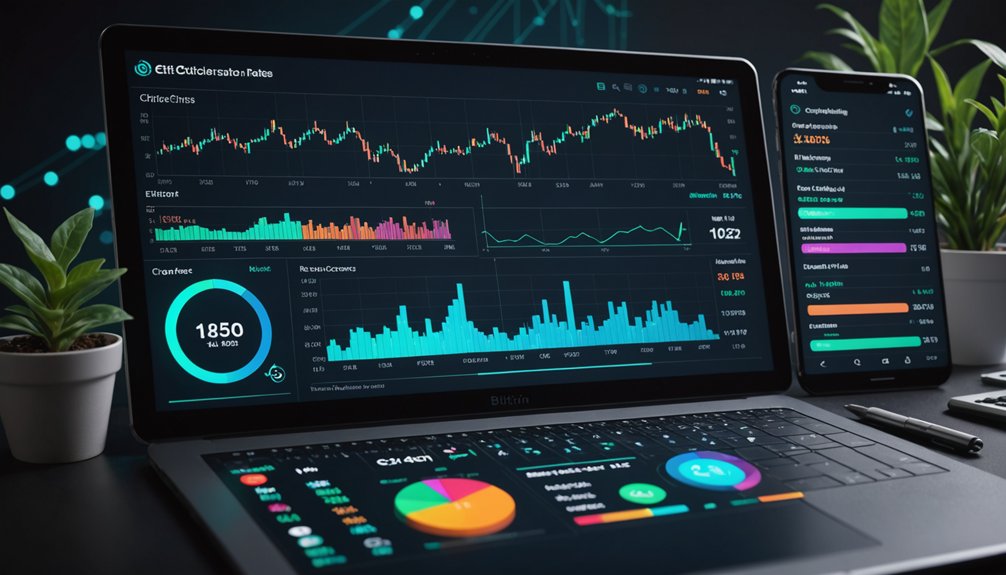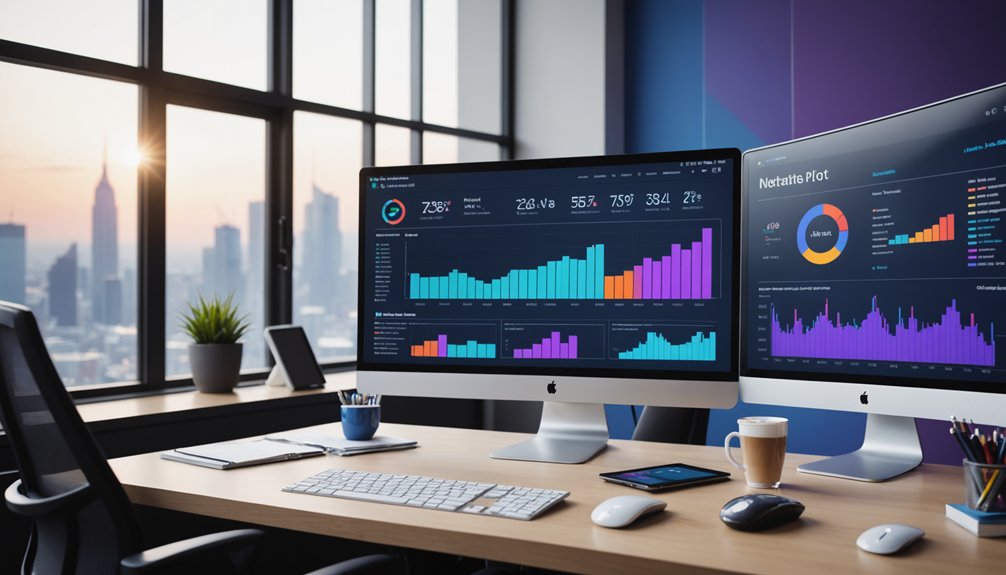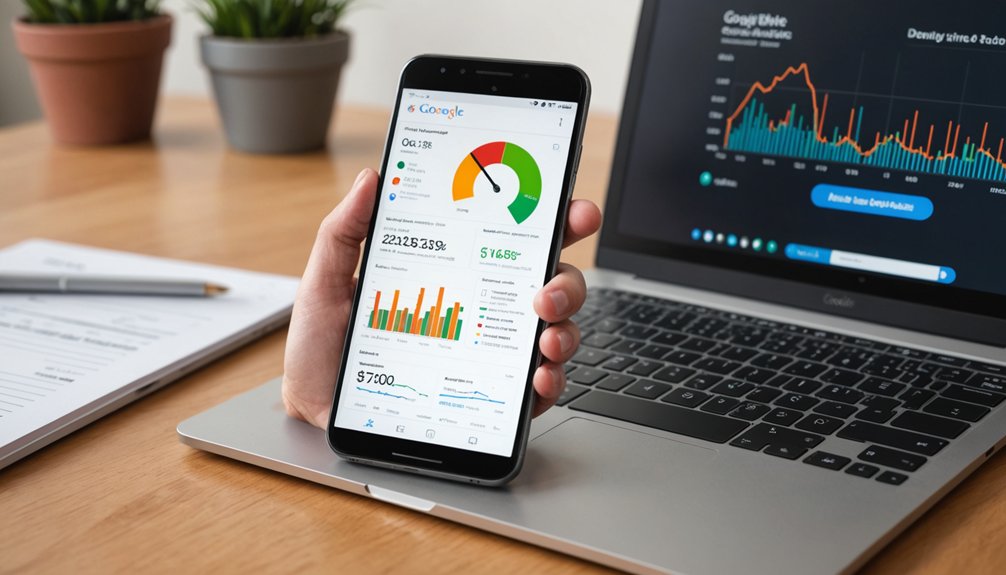Social media ROI in 2025 isn’t about followers anymore. It’s cold, hard data. Companies track lead generation, conversion rates, and direct revenue attribution. Customer acquisition costs get measured against lifetime value—math matters now. AI tools analyze traffic sources, engagement patterns, and sentiment in real-time. Competitor benchmarking? Essential. The most successful brands align these metrics with sales cycles, recognizing some conversions take months. Patience pays dividends in this game.

The digital marketing landscape has evolved—drastically. Social media isn’t just for cat videos anymore. It’s serious business. Companies pour millions into platforms that didn’t exist a decade ago, and measuring return on that investment matters. A lot.
Gone are the days when follower counts impressed the C-suite. Today’s metrics dig deeper. Lead generation tracks qualified prospects driven by social efforts—actual humans who might spend actual money. Conversion rates tell the real story: who takes action after seeing that cleverly crafted post. That’s the stuff that matters. AI-powered analytics enable real-time optimization of social campaigns for maximum impact.
Traffic metrics reveal which platforms actually send visitors to your website. Is TikTok outperforming LinkedIn? Numbers don’t lie. Revenue attribution connects social media activity directly to sales figures. No more guessing if those Instagram Stories translate to dollars and cents. Hootsuite Analytics delivers enterprise-level insights for tracking complex revenue patterns.
Data reveals the truth about your platforms—stop guessing which channels convert and start knowing.
Customer Acquisition Cost calculations have become non-negotiable. Spending $500 to acquire a $50 customer? Math isn’t that hard, folks. Working with experts like Kayla Simpson can help transform social media from a cost center into a profit center. The CLTV-to-CAC ratio compares lifetime value against acquisition costs—a brutal reality check for many brands.
Engagement metrics still count. Likes, comments, shares—they’re engagement breadcrumbs. Share of Voice determines if you’re leading conversations or just adding to the noise. Companies that actively monitor performance metrics are 30% more likely to exceed their revenue goals. Competitor benchmarking shows if you’re winning or just participating.
Sentiment analysis reads the room. People might mention your brand constantly, but are they saying nice things? That matters.
Return on Ad Spend measures revenue generated versus what you paid for those fancy carousel ads. Simple division. Average Order Value tracks if social leads spend more or less than other channels.
Social media impressions count eyeballs. Brand mentions track who’s talking about you. Bounce rates reveal if traffic sticks around or flees immediately.
Calculating true ROI requires aligning metrics with sales cycles. Some conversions take days, others take months. Patience required.
The bottom line? Track what matters, ignore vanity metrics. Social ROI isn’t magic. It’s math.
Frequently Asked Questions
How Often Should I Recalibrate My Social Media ROI Targets?
Regular recalibration of social media ROI targets is essential.
Monthly reviews for ongoing campaigns, post-campaign analysis for specific promotions. No exceptions.
Industry benchmarks vary wildly—Facebook (200-300%), Instagram (150-300%)—but they’re just starting points.
Reality check: campaign objectives and platform differences matter more.
Performance metrics change.
Audience behaviors shift.
What worked last quarter? Probably won’t now.
Social media’s fickle like that.
Stay on top of it.
Or don’t.
Your metrics, your funeral.
Which Metrics Matter Most for B2B Versus B2C Companies?
B2B companies prioritize lead generation, conversion rates, and pipeline metrics. They need hard numbers that translate to actual business.
CAC and multi-touch attribution? Critical.
B2C firms? Different ballgame. Brand awareness and engagement metrics rule the day. They’re tracking likes, shares, and all that fluffy stuff.
Social-driven conversions matter too.
Both care about ROI, but they measure success through entirely different lenses. No surprise there.
Can Social Media ROI Be Accurately Predicted With AI Tools?
AI tools can predict social media ROI—but with caveats. They excel at analyzing patterns and automating routine tasks. Not magic, though. Garbage in, garbage out. Quality data matters.
The technology struggles with trend uncertainty and complex metrics. No single number tells the whole story. Integration headaches exist too.
Companies need widespread adoption for consistent measurement. Pretty good predictions? Yes. Perfect crystal ball? Dream on.
How Do Privacy Regulations Impact Data Collection for ROI Measurement?
Privacy regulations hit data collection hard. They limit what businesses can track, forcing them to get consent before gathering personal information.
Companies must anonymize data, minimize storage, and implement strict retention policies. This complicates ROI measurement considerably. Some metrics become completely off-limits. The costs add up too—compliance isn’t cheap.
Businesses are adapting with in-house analytics and transparent practices. No easy workarounds here. The data landscape has changed for good.
What Benchmarks Should I Use for My Industry-Specific ROI Goals?
Industry-specific benchmarks vary wildly.
Tech companies? Website traffic and lead generation matter most.
Retail needs to track direct sales from campaigns.
Healthcare prioritizes engagement metrics because of those pesky regulations.
Financial services? They’re obsessed with customer lifetime value.
And entertainment just counts views and shares.
Smart move: research industry averages for engagement rates, conversion percentages, and customer acquisition costs.
Then spy on competitors. Seriously. Their metrics reveal opportunities.




